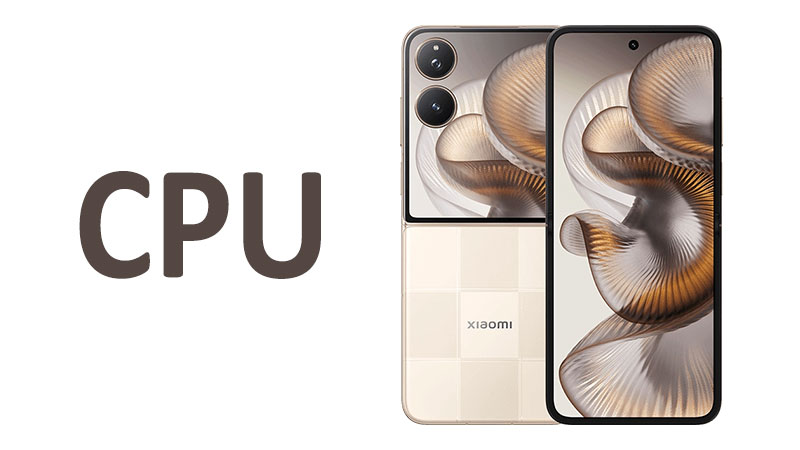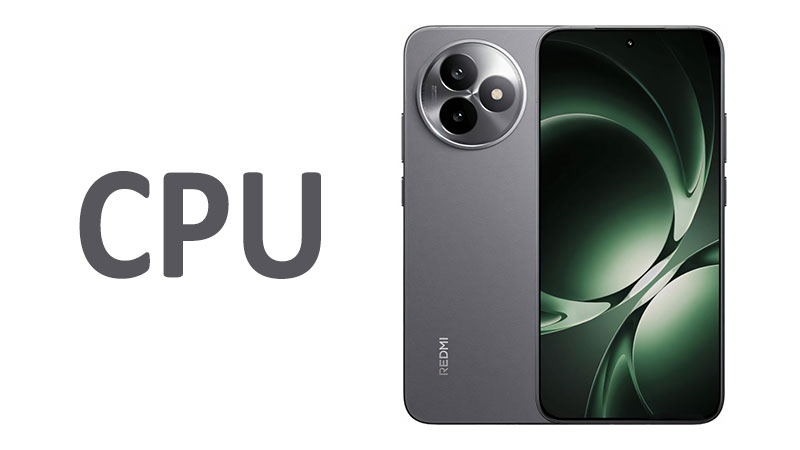The Apple iPhone 17 Pro Max Processor represents a significant leap in mobile silicon design. This new device showcases the highly anticipated Apple A19 Pro chipset. Apple designed this chip specifically for next-generation performance and efficiency. It promises to redefine the flagship smartphone experience for power users. We will explore the A19 Pro’s specifications, performance metrics, and real-world impact.
The A19 Pro powers Apple’s latest Pro Max device. It sets a new benchmark for speed and on-device artificial intelligence. This review covers everything a potential buyer needs to know. It details the architecture, gaming capabilities, and power management features. Read on to discover the true power of the iPhone 17 Pro Max.
The A19 Pro Architectural Deep Dive
The A19 Pro is built upon groundbreaking semiconductor technology. It establishes a new foundation for high-performance mobile computing. This chip moves beyond simple speed bumps. It delivers massive improvements in efficiency and specialized processing.
Cutting-Edge 3 nm Fabrication
The A19 Pro chipset is fabricated using TSMC’s advanced 3-nanometer (3nm) process technology. This is often referred to as the N3P node. This is the third generation of 3nm technology. It offers superior transistor density and electrical efficiency.
Smaller transistors mean Apple can pack more computing units onto the same size chip. This results in higher raw performance. Crucially, it also allows for reduced power consumption at any given performance level. The N3P process is key to maintaining high speeds without draining the iPhone 17 Pro Max battery life. It improves the performance-per-watt metric substantially over previous generations.
CPU Core Configuration and Clock Speeds
The central processing unit (CPU) in the A19 Pro uses a Hexa-core design. This configuration is optimized for both peak performance and daily efficiency. It intelligently manages all processing tasks. The design consists of two distinct clusters of cores.
The high-performance core cluster handles demanding tasks. This includes running AAA games or editing 4K video files. There are two performance cores in this cluster. These cores clock up to an impressive 4.26 GHz. This high clock speed ensures lightning-fast single-thread performance. Single-core speed is essential for app responsiveness and general system snappiness.
The efficiency core cluster handles background tasks and everyday operations. These tasks include checking email or browsing social media. This cluster contains four high-efficiency cores. These cores operate at a maximum frequency of approximately 2.60 GHz. They are designed to minimize power consumption. This architecture allows the iPhone 17 Pro Max to save significant battery power during normal use.
This 2+4 core split provides dynamic task scheduling. It ensures the phone uses the correct power level for every activity. This balance is crucial for a premium mobile device.
Enhanced Cache Memory Structure
The A19 Pro features a significantly enhanced memory and cache structure. Cache memory is extremely fast storage located directly on the processor. It reduces the time cores spend waiting for data. Larger caches improve both performance and efficiency across the board.
The efficiency core cluster receives a substantial 6 MB of dedicated L2 cache. Meanwhile, the performance core cluster boasts 16 MB of L2 cache. These are significant increases over the previous generation A18 Pro. This large L2 cache helps both clusters operate faster and more independently.
Furthermore, the System-Level Cache (SLC) is dramatically expanded. It reaches 32 MB in the A19 Pro. The SLC acts as a shared memory pool for the CPU, GPU, and Neural Engine. This massive SLC boost minimizes latency. It also maximizes bandwidth between all major components on the chipset. This is especially vital for heavy AI and graphics workloads.
Specialized Comparison: A19 Pro Cache vs. A18 Pro
The A18 Pro utilized a smaller overall cache structure. It relied more on unified memory bandwidth. The A19 Pro, however, prioritizes on-die cache size. This change drastically reduces memory access delays. For professional users, this means handling large photo or video files becomes smoother. The larger cache sustains higher data throughput during intensive operations. This ensures that the powerful 4.26 GHz performance cores always have data ready to process.
Graphics and Gaming Performance
Mobile gaming continues to push the boundaries of smartphone hardware. The A19 Pro delivers a massive leap in graphical processing power. It focuses on next-generation rendering techniques like ray tracing. This makes the iPhone 17 Pro Max a true mobile gaming console.
The Six-Core Apple GPU
The A19 Pro incorporates a powerful six-core Apple GPU. This GPU uses the company’s latest Apple 10-series architecture. This new design is engineered for both raw performance and power efficiency. It is rumored to offer up to 37% to 40% better graphics performance than the A18 Pro. This uplift is enormous for a single generational jump.
This substantial gain translates directly to high frame rates. It allows demanding 3D titles to run at peak settings. Complex visual effects and high resolutions become readily achievable. The A19 Pro GPU maintains exceptional fidelity in mobile gaming environments. This ensures an immersive and responsive user experience.
Next-Generation Ray Tracing Capabilities
Ray tracing is a modern rendering technique. It simulates how light interacts with real-world objects. This creates incredibly lifelike shadows, reflections, and illumination. The A19 Pro features dedicated hardware acceleration for ray tracing. This capability is 56% faster than the hardware in the A18 Pro.
This significant speed boost means developers can integrate full ray-traced visuals into mobile games. Players will experience console-quality graphics. Games will feature realistic water reflections and accurate ambient occlusion. The A19 Pro pushes the visual limits of mobile gaming far further than previous chips. It solidifies Apple’s lead in mobile graphics technology.
Sustained Performance and Thermal Management
Raw speed is only useful if the chip can maintain it. Sustained performance prevents the phone from slowing down during long gaming sessions. This slowing down is known as thermal throttling. The iPhone 17 Pro Max tackles this with an innovative thermal redesign.
The Pro Max model features an advanced vapor chamber cooling system. This system uses a sealed chamber containing liquid. This liquid quickly vaporizes when heated and moves heat away from the processor. It then condenses back into liquid to repeat the cycle. This effective heat dissipation enables up to 40% better sustained performance compared to the A18 Pro. This means hours of high-performance use without overheating. This feature is vital for competitive gamers and professional video editors.
Specialized Comparison: A19 Pro GPU vs. A18 Pro
The A18 Pro introduced initial hardware ray tracing support. The A19 Pro elevates this to a practical level for everyday gaming. The A19 Pro offers a much greater performance gain in graphics than in CPU speed. The A18 Pro offered incremental GPU gains. The A19 Pro delivers a generational leap in graphical throughput. This makes the GPU the real star of this new chipset.
The AI Revolution: Neural Engine and Apple Intelligence
Artificial intelligence (AI) and machine learning (ML) are core to the modern smartphone. They power everything from photo editing to voice assistants. The A19 Pro places a major emphasis on dramatically accelerating these workloads. This focus supports the next wave of on-device AI features.
The 16-Core Neural Engine Advancements
The A19 Pro integrates an enhanced 16-core Neural Engine. This dedicated block of silicon is optimized for running complex AI models. Apple has significantly boosted its throughput and efficiency. This unit is designed to handle increasingly large language models (LLMs). These models power the advanced Apple Intelligence system.
The Neural Engine allows AI tasks to run directly on the device. This provides immense advantages in speed and privacy. Tasks execute instantly without sending sensitive data to the cloud. This includes real-time voice transcription and sophisticated image analysis. The A19 Pro’s Neural Engine is significantly faster than its predecessors. This ensures a seamless and private AI experience.
Neural Accelerators in the GPU
In a key architectural move, Apple embedded Neural Accelerators into each GPU core. This hybrid approach offloads many machine learning calculations from the main Neural Engine. It delivers up to 3× the peak GPU compute for AI tasks. This capability helps process massive amounts of visual data quickly.
This is essential for high-end features like MetalFX upscaling in games. It also helps with advanced computational photography techniques. By distributing AI tasks, the A19 Pro maximizes parallelism. This design choice is a major part of the A19 Pro’s AI prowess.
Specialized Comparison: A19 Pro AI vs. A18 Pro
The A18 Pro’s Neural Engine was primarily focused on specific image processing tasks. The A19 Pro’s unit expands its focus to generative AI and LLMs. The addition of GPU Neural Accelerators is a new frontier for mobile chips. This combination ensures the iPhone 17 Pro Max is ready for the future of on-device intelligence. This marks a strategic shift toward full local AI capability.
Real-World AI and Camera Processing
The power of the A19 Pro is instantly visible in the camera system. The chip enables groundbreaking computational photography features. It drives the ability to capture 48MP photos across multiple lenses. This requires immense processing power.
The improved Image Signal Processor (ISP) works with the Neural Engine. It handles complex tasks like noise reduction and color optimization instantly. Professional features are also improved. These include 4K 120 fps video recording and ProRes RAW capture. The chip ensures these high-resolution, high-bitrate files are handled smoothly. The A19 Pro makes pro-grade mobile filmmaking seamless.
Power Efficiency and Battery Optimization
The efficiency of the A19 Pro is just as important as its performance. Battery life is a critical factor for Pro Max users. Apple has focused heavily on delivering top-tier performance while minimizing power draw.
3nm Process Efficiency Gains
The 3nm N3P process is inherently more efficient than older nodes. This fabrication allows transistors to switch states using less energy. This gain applies to both performance and efficiency cores. The result is more computing work done per unit of energy consumed. This efficiency is the core reason the iPhone 17 Pro Max boasts improved battery life.
Dynamic Core Management
The enhanced core architecture contributes to better battery longevity. The chip relies heavily on the four high-efficiency cores for light tasks. These cores consume minimal power. The two powerful performance cores only engage when absolutely necessary. This smart scheduling prevents unnecessary power spikes.
Apple integrates an Adaptive Power Mode in iOS 26. This feature works closely with the A19 Pro’s architecture. It learns user behavior and anticipates power needs. This intelligent system helps conserve energy dynamically.
Specialized Comparison: A19 Pro Efficiency vs. Competitors
When comparing the A19 Pro to flagship Android chips, Apple maintains a strong lead in power efficiency. Early tests suggest the A19 Pro consumes significantly less power than some rivals at full CPU load. For instance, some competitive chips consume up to 19 watts at peak. The A19 Pro manages to deliver its performance while consuming closer to 12 watts. This power advantage is difficult for competitors to match. It results in visibly better battery endurance in real-world scenarios.
Competitive Landscape and Industry Benchmarks
The A19 Pro sets a new competitive standard. It faces stiff competition from high-end chips like the Snapdragon 8 Elite Gen 5. Examining benchmarks reveals where the A19 Pro excels and where it might face challenges.
A19 Pro vs. A18 Pro: Generation-on-Generation Gains
Moving from the A18 Pro to the A19 Pro brings predictable yet substantial gains. The 3nm shift provides an approximate 10% to 12% boost in raw CPU performance. Multi-core performance sees similar steady gains.
The most notable difference is in specialized areas. The A19 Pro offers a 37% to 40% jump in GPU performance. Ray tracing speed improves by over 50%. Sustained performance is also 40% higher due to thermal management. The A19 Pro represents a crucial focus on graphics and AI rather than just core CPU speed. This makes it a specialist chip for the professional user.
The Rivalry: Snapdragon 8 Elite Gen 5
Qualcomm’s flagship Snapdragon 8 Elite Gen 5 is the primary Android rival. This competition is now extremely fierce. In single-core performance tests, the A19 Pro maintains Apple’s traditional lead. Its massive cache and high 4.26 GHz clock speed ensure top-tier single-threaded scores.
However, the competition is closing the gap in multi-core tasks. The Snapdragon 8 Elite Gen 5, potentially using more cores, sometimes achieves a higher overall multi-core score. It also utilizes its own advanced Neural Processing Unit (NPU). This unit offers strong AI performance and efficiency improvements. While the A19 Pro is exceptionally efficient, the competition delivers impressive total core output. The A19 Pro emphasizes power efficiency and sustained single-core dominance.
Important Points a Buyer Should Know
- Performance is Sustained: The most important upgrade is the vapor chamber cooling. This means the phone will not slow down during long, demanding tasks. This sustained performance is crucial for mobile creators.
- AI is On-Device: Generative AI features run primarily on the A19 Pro. This guarantees faster, more private interactions. This is a key advantage for security-conscious users.
- Future-Proofing Graphics: The 56% faster ray tracing performance ensures the phone can handle graphics for years. It will support future AAA mobile gaming titles as they become more demanding. The A19 Pro is designed for longevity in graphics capability.
- It Enables New Features: The chip is the reason for new camera capabilities. These include the 8× optical zoom and 4K 120 fps video. The A19 Pro is the necessary foundation for these hardware advancements.
Pros and Cons of the A19 Pro Chipset
Pros:
- Industry-Leading Single-Core Speed: The A19 Pro maintains Apple’s traditional lead in core responsiveness. Apps launch instantly and run flawlessly.
- Exceptional Power Efficiency: The 3nm N3P process provides huge efficiency gains. This leads to outstanding battery life for a device this powerful.
- Massive GPU Performance Boost: The 40% jump in graphics speed is transformative. It makes the iPhone 17 Pro Max the best mobile gaming platform.
- Superior Sustained Performance: The vapor chamber cooling prevents thermal throttling. The phone stays fast even during extended, heavy use.
- Advanced On-Device AI: The powerful 16-core Neural Engine handles generative AI locally. This enhances privacy and reduces latency.
Cons:
- Potential Multi-Core Lag: Some multi-core benchmarks show competitors offering slightly higher peak total throughput. This is due to a higher core count.
- Peak Power Consumption Increase: Although overall efficiency is up, the 4.26 GHz performance cores may consume more peak power. This happens only during very brief, maximum-load moments.
- Requires Proprietary Software: Full optimization relies on Apple’s Metal API and iOS 26 features. Users cannot fully appreciate the power without the corresponding software ecosystem.
Conclusion
The Apple A19 Pro chipset is a defining feature of the iPhone 17 Pro Max. It is more than just an annual upgrade. It represents a significant strategic shift toward sustained performance and on-device AI. The chip’s 3nm fabrication and advanced Hexa-core configuration create a powerhouse. Its 4.26 GHz performance cores ensure immediate and flawless responsiveness.
The generational leap in graphics is particularly noteworthy. The 6-core Apple GPU and accelerated ray tracing capabilities make mobile gaming truly comparable to consoles. Furthermore, the 16-core Neural Engine prepares the iPhone 17 Pro Max for the generative AI future. Users gain features that are fast, personalized, and private.
Crucially, the new vapor chamber cooling allows the phone to sustain peak performance. This eliminates the frustrating thermal throttling issues common in older devices. For the professional creator, serious mobile gamer, or heavy multitasker, the A19 Pro is indispensable. It provides the headroom required for the next three to four years of mobile application demands.
The iPhone 17 Pro Max, powered by the A19 Pro, is not just fast. It is efficient, cool, and capable of leading the mobile computing race. It is a necessary purchase for anyone seeking the absolute pinnacle of smartphone technology.
FAQ
Is the A19 Pro a 2nm chip?
No, the A19 Pro is built on TSMC’s advanced 3nm process. This node is specifically the third-generation N3P technology.
Does the A19 Pro support Wi-Fi 7?
Yes, the iPhone 17 Pro Max chip supports Wi-Fi 7 connectivity. This is enabled by a new Apple-designed N1 wireless networking chip.
What is the clock speed of the efficiency cores?
The four efficiency cores on the A19 Pro clock up to approximately 2.60 GHz. This helps save significant battery power during normal operation.
Will the A19 Pro improve battery life over the A18 Pro?
Yes. Despite increased performance, the highly efficient 3nm process and dynamic core scheduling are expected to provide noticeable battery life improvements.



